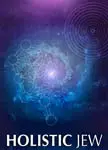One of the things that troubles me about Tisha b’Av is that there is so very much sadness and mourning. There is a tendency to dwell in the pain, as if the pain and discomfort were the final goal. “We hurt, so we are yotzay”, as it were.
The calls for action on the Renewal Lists are refreshing and much more useful. I honor the new practices coming into form.
Most shuls mourn the destruction of the Temple in Jlem with horrible images from Eicha; traditional practice. It troubles me that the Shoah is not a part of it. It is like the elephant in the room. It feels inauthentic to mourn the Temple today without mourning the devastation of those millions of innocent souls who perished in the Shoah. Few services bring the Shoah into it. It is not part of the traditional liturgy.
During these summer weeks, history left an imprint of destruction, uncertainty and death. I see it as an invitation to release “form”. By releasing form, or “dying” we may open to something bigger. Making this an annual practice can allow layers of transformation to take place over a lifetime.
Holy Days leave imprints in time. When they are celebrated “time travel” is possible, as it were. Tisha B’Av serves as an annual opportunity to “die”. Rebirthing starts again on Tu BAv. Soon we are into Elul and the new year.
“Who ever wants to live should kill himself.” Rabbi Levi Yitzhak (then of Pinsk) (The Kiss of God by Micheal Fishbane p 47) In order to really live, one must die. Dying, here, means being willing to give up form as part of spiritual practice, even when it is uncomfortable to do to open to a greater truth.
Changing of form can be very hard. It can manifest in many ways. Simple matters and bigger matters. Losing a job, refraining from drinking coffee, going vegan, Form, in life, is necessary. Often it is ego focused. It is deep spiritual work to discern forms that serve from form that has become a comfortable habit and no longer serve. Form should not be served by its own merit. This is like the Golden Calf.
Form is needed and useful for life. When form is concertized and left unchecked, it often lasts beyond its usefulness. For example, my parents were Shoah survivors. Safety was a major issue for them, understandably. They developed a thick layer of security around all they did. Fences and fences, as it were. (Not unlike the rabbis who said that we should put fences up around Jewish practice.) It was appropriate for them. They taught me to do this. For many years I lived by their rules. I still do, to a degree. Checking and rechecking safety takes a lot of time and energy. My parents were not aware, nor did they have the luxury of releasing the safety net. Trouble with fences and fences is that they can block light along with all the dangers they keep out. A challenge with a filter is that it can filter out goodness like friends, joy, peace, and letting someone else take the lead.
This time of year brings the image of the snake with its tail in its mouth. The beginning is already embedded before the end. This can be witnessed by the practice of Shabbat Hazon. The dying and the re-birthing offers an opportunity to recapitulate into form that can better receive Holy Presence. This is the gift of summertime.

